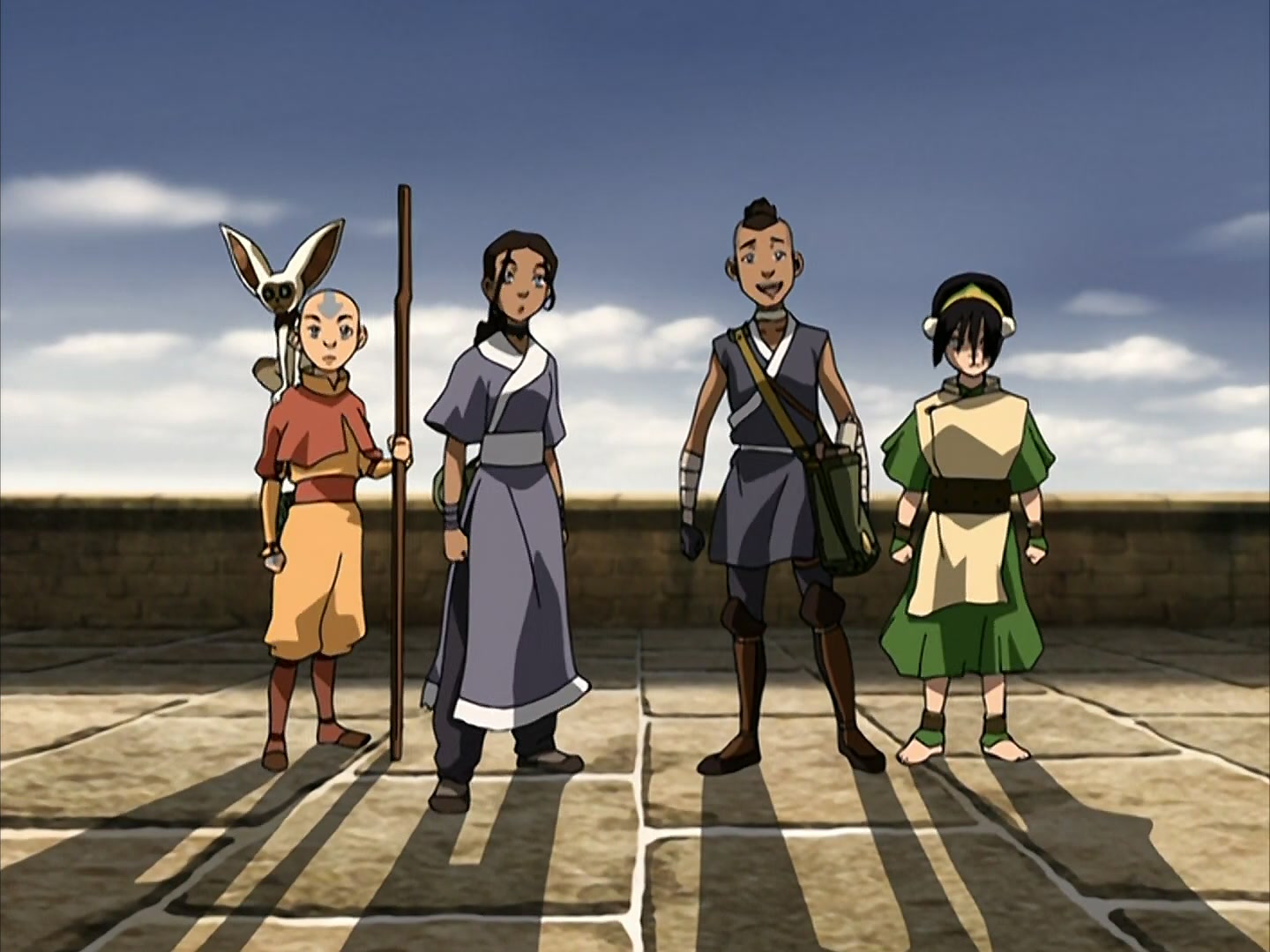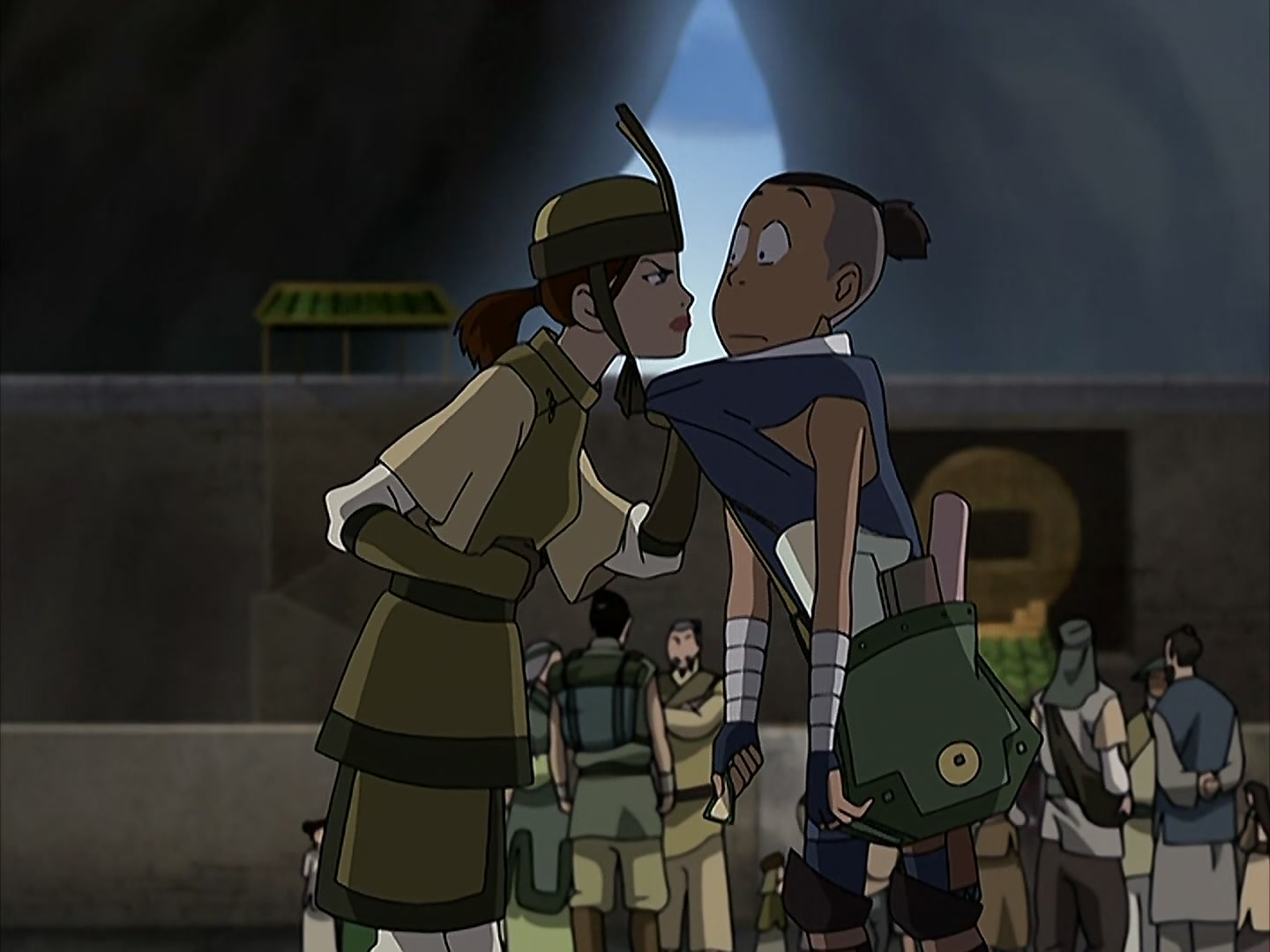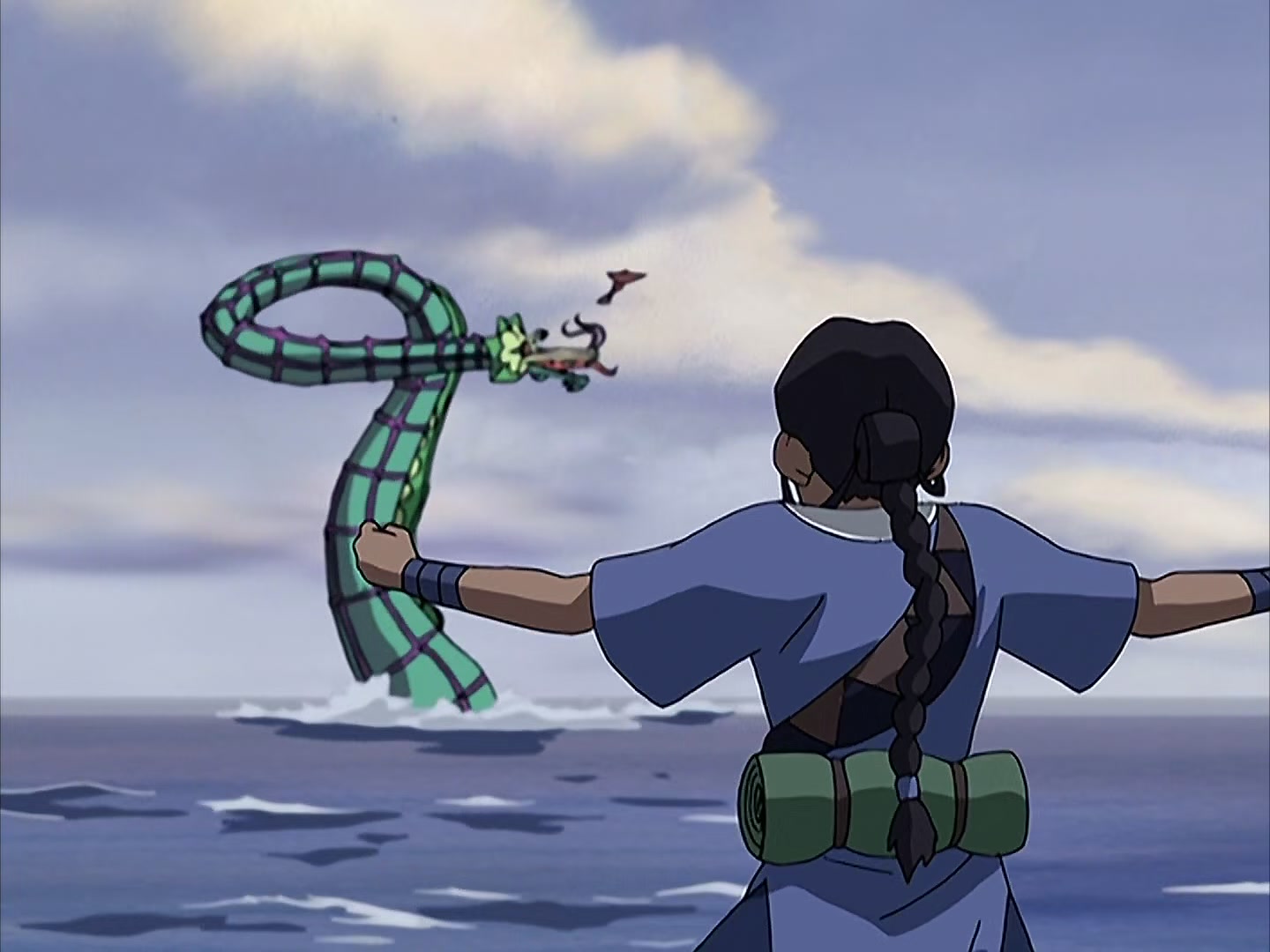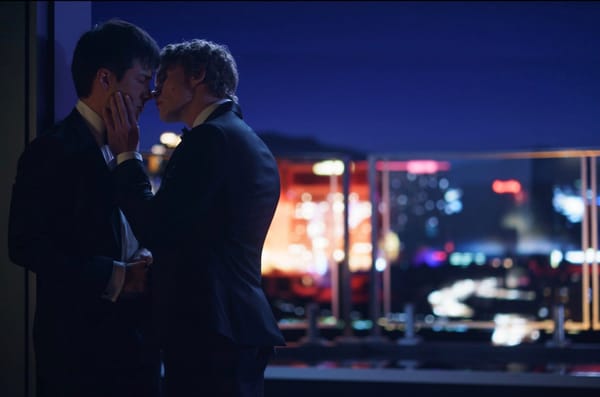Avatar: The Last Airbender: "Chapter Twelve: The Serpent's Pass" and "Chapter Thirteen: The Drill"
In which we talk about how this show handles spectacle

(This is the thirteenth installment of my weekly recaps of Avatar: The Last Airbender, the Nickelodeon animated series that ran from 2005 to 2008 to much critical acclaim. I’ve never seen it! These recaps are only available to paid subscribers.)
“Chapter Twelve: The Serpent's Pass” (originally aired September 15, 2006)
“Chapter Thirteen: The Drill” (originally aired September 15, 2006)
Note: Netflix streams these two episodes as one episode called "The Secret of the Fire Nation"

"The Serpent's Pass" and "The Drill" — which I am just going to refer to as "The Secret of the Fire Nation" from now on — are maybe the most season one-ish episodes of season two so far. I'm not necessarily complaining here. The reason these episodes feel a bit like throwbacks is because the dramatic stakes and character stakes are so clear. It's pretty hard to do a story about complicated emotions when a giant drill is your main antagonist.
As such, "The Secret of the Fire Nation" is a good chance to check in on something Avatar is nailing this season in a way it didn't always in season one: action sequences. "Secret" is jam-packed with big, action-y moments, and in all of them both the stakes and the geography are clear. We can sit back and relax when Aang scoots his way up a wall to hurl himself down from a great height in hopes of wedging a rock into the giant drill that it might explode and cover everybody in slurry.
That remains true even when I'm not precisely sure what's meant to be happening in a scene. The plan to sabotage the drill from the inside is obviously an effective one, but I really never quite followed the logistics of why Aang and Katara slicing through certain beams will allow the whole drill to explode after Aang hits the exact right pressure point. But I didn't have to follow those logistics. All that mattered was Aang had to do the thing at the right moment.
In season one, my mind was too often taken up with wondering just who was doing the what and the why and when, because the action filmmaking was too often muddy and hard to understand. Season two has both upped the spectacle and upped the quality of these sequences, so even when Katara and Aang are trying to disorient a sea serpent — an intentionally confusing sequence — it's clear what's happening, why it matters, and just who cares the most about what's happening.
On a character and thematic level, the storytelling in this two-parter is Just Okay. The events of the episodes exist to bring some of the season one characters back, particularly Suki (who is gone too soon!) and Jet (who could probably go a little more quickly), and they exist to get the kids to Ba Sing Se in as spectacular a fashion as possible.

But guess what? The "as spectacular a fashion as possible" part really matters here. The characters have been headed to Ba Sing Se all season long, and they've encountered all number of hardships along the way. But we don't care about them reaching Ba Sing Se itself like we cared about the journey in season one. The reason for the kids' travels is almost superfluous to the story, especially once Toph joins the cast as Aang's earthbending instructor. Ba Sing Se is an idea — the last free city! — more than it is a location. That can be a dangerous way to introduce a location that's going to be quite important to the story going forward. And yet by the time we get to Ba Sing Se, we know almost nothing about it.
So you know what? Here are two full episodes — a single story, no less — about how much everybody wants to get to Ba Sing Se and how the Fire Nation is conspiring to destroy it. We're introduced to the complicated ticketing system that gets people in and out of the city and how it's keeping our characters from reaching their goal. We see the desperate lengths people are willing to go to to get into Ba Sing Se. (That the Serpent's Pass is dangerous is a good way to fill an episode, but it's also sneakily a great way to make Ba Sing Se seem like a place everybody's just gotta be.) And we see the great walls of the city that have protected it this long and just how much the Fire Nation is stymied by those walls, which sets up character beats for Azula and Aang.
Yes, much of this has been conveyed in other episodes. In the flashbacks in "Zuko Alone," for instance, we saw Iroh being stymied by trying to take Ba Sing Se. But it's one thing to know that a piece of story information is true and another to have that plot point become a vital part of an episode. Iroh trying to get past the walls in a flashback is one thing, because we know he didn't. Azula trying to broach them with a drill ups stakes we didn't realize we were following all along.
I am not the world's biggest fan of spectacle. To put it in Dungeons & Dragons terms, I kinda zone out when it's time for the big fight with the giant monster, but when it's time for some character interaction after the fight, I'm all in. I'm not saying this to say that spectacle is bad. Spectacle is good! But I've grown so used to empty spectacle that I inevitably tune a lot of spectacle out unless it's really, really, really, really impressively done.
Oddly enough, "Secret of the Fire Nation" made me realize what I mean by "empty spectacle," a term I'm not sure I could have defined beyond the obvious "spectacle devoid of meaning or feeling." Because, yes, that defines empty spectacle on some level, but it also feels imprecise. What I think this two-parter taught me about meaningful spectacle is not that it's tied to any particular aspect of the storytelling but that it is chosen to highlight an aspect of the storytelling.

Most meaningful spectacle exists to highlight character choices. The season one finale, for instance, shows us just how powerful Aang has become, just how devastated Sokka can be, and just how much the group needs Katara. Other meaningful spectacle might hit a thematic point, as when tension builds over whether Zuko will use his firebending in the final fight of "Zuko Alone." In that episode, we saw just how much Zuko's attempts to define himself by running away from himself were doomed to failure.
But in rare cases, meaningful spectacle can highlight plot and setting choices, and that's what I'd argue Avatar does here. Ba Sing Se is important, but we don't know how important it is, so here's a whole bunch of spectacular action sequences designed to make it seem like the most important place on the planet. That ramps up the investment we have in Ba Sing Se so much that by the time the characters are in the city, we have already been half won over by a place we've never been to. The imperative is now on the show to make us invest fully in Ba Sing Se, but it's done a lot of legwork here. It's more sophisticated stuff than it might seem to be on the surface.
And yes, on that surface, there's a lot of season one in here, from the more over the top humor to Sokka being primarily the comic relief to some very strange romantic plots. (I don't get Suki/Sokka at all just yet, though I think it's obvious I will at some point.) The character grace notes, too, fall a little short. When Aang cries over seeing the baby named Hope, it's just a little too manipulative, even though I, too, miss Appa.
But you know what? I'm not going to remember those quibbles when I think about this episode. I'm going to think about Katara building a bubble to help everyone walk along the ocean floor. I'm going to think about Toph hanging out underneath a giant drill, trying to help her friends. I'm going to think about Mai and Ty Lee running around and beating people up. And I'm going to think about Aang and Azula facing off on top of the drill.
Meaningful spectacle isn't as hard to pull off as modern blockbusters might make it seem, but you really have to choose when to push all your chips onto the table. Avatar does so in this two-parter, and it's a way of clearing out space for what's to come. We'll figure out if the move paid off over the rest of the season, but for now, I'm excited to see what happens next, even if the show goes completely broke.

Other thoughts I thought:
- When the sea serpent showed up, Cassie got me all excited by suggesting it might be my beloved friend the Unagi, but IT WAS NOT.
- On the other hand, the sea serpent is this week's "almost gets to eat Momo" contender. (Everybody else is seeing this, right? I haven't just gaslit myself into believing half this show is about characters trying to eat Momo, right?)
- Mai just being, like, "I don't really care about this" during the final fight was really funny, honestly.
- Smellerbee taking offense to being labeled a boy and earnestly declaring she's a girl is a big trans feminine mood, obviously.
- It's a bold choice for the show to give us no clues as to what happened to Appa in this two-parter. He could be anywhere! Bring back my Appa to me!
- Zuko and Iroh's journey to Ba Sing Se is very much a C-plot in these episodes, but it's one that also underlines certain things we need to know about Ba Sing Se, and it (sigh) brings Jet back onto the show.
- I love that the show has to clarify that what the kids are covered in at the end is slurry and define what slurry is just in case we think they're covered in poop.
Next time: I'm checking out "City of Walls and Secrets" and "The Tales of Ba Sing Se." I have already been told I'm going to be an easy mark for these episodes, so we'll see you then!




